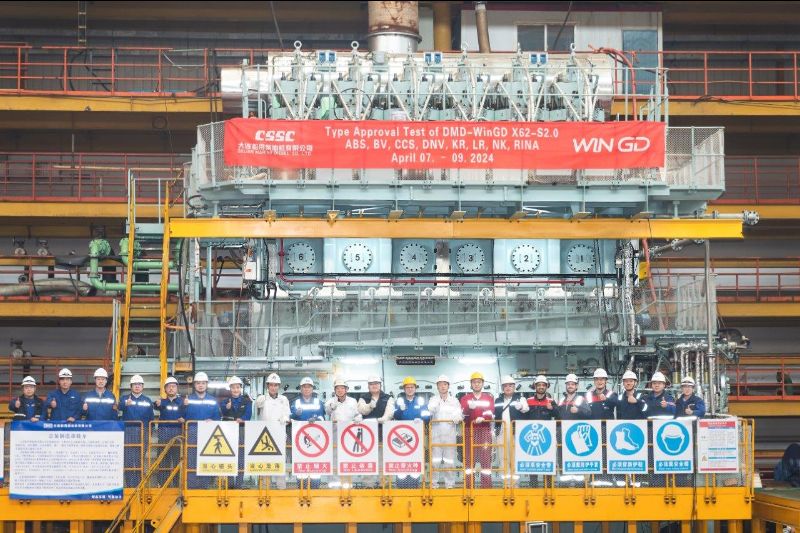
Above Average 2013 Hurricane Season Expected
Hurricanes Karl, Igor and Julia over the Atlantic in 2010. Courtesy NOAA
By Brian K. Sullivan
(Bloomberg) — An above-average number of storms will emerge from the Atlantic this hurricane season, and the odds of the U.S. being hit by a major system are about 70 percent greater than predicted last year, Colorado State University researchers said.
Eighteen named storms will develop in 2013, the CSU forecasters said today in their initial seasonal outlook. Nine of the systems are expected to become hurricanes, four of them major systems of Category 3 or higher with winds of at least 111 miles (179 kilometers) per hour.
The CSU team estimated the chances of a major hurricane strike on the U.S. this year at 72 percent, compared with 42 percent last year. Sandy, which devastated parts of New York and New Jersey in October, had winds of Category 1 level.
“We think we will have a pretty active season here,” said William Gray, professor emeritus of atmospheric science at the Fort Collins, Colorado, university, who pioneered long-range hurricane forecasting 30 years ago. “Things are just looking good.”
Atlantic hurricanes are watched closely because of their threat to major U.S. population centers and to the Gulf of Mexico. The Gulf is home to 7 percent of U.S. natural gas output, 23 percent of oil production and 44 percent of refining capacity, according to the Energy Department.
Hurricane Isaac, which went ashore in Louisiana last August as a Category 1 storm, shut in as much as 95 percent of Gulf oil and 73 percent of natural gas as companies evacuated offshore platforms and drilling rigs.
Strike Odds
Gray and co-author Philip Klotzbach said the 20th-century average for a U.S. strike from a major storm is 52 percent. The last was Hurricane Wilma in 2005 and the seven years since then is the longest stretch on record without one.
“We have been very lucky,” Gray said. “That luck, statistically speaking, shouldn’t keep holding up. I don’t think people know how lucky we have been.”
Gray said a lack of warming in the central Pacific Ocean is one reason researchers believe 2013 will be an active season. When the central Pacific warms, in a phenomenon called an El Nino, it causes wind shear to increase across the Atlantic basin. High wind shear tears at the structure of budding hurricanes, robbing them of power or destroying them.
Last Year
Last year, the CSU forecasters initially predicted 10 named storms, about half of what developed, in part because they expected an El Nino to form. The 30-year average for the Atlantic storm period, which runs from June 1 through Nov. 30, is 12 systems, according to the National Hurricane Center in Miami. A storm gets a name when sustained winds reach 39 mph.
The central Pacific is currently in a neutral state and is expected to remain that way for at least the next three months, the Australian Bureau of Meteorology said yesterday.
“If an El Nino formed and came in, that is the only thing that could dampen a pretty active year,” Gray said by telephone. “The El Nino looks not very likely.”
Weather patterns and sea-surface temperatures across the Atlantic have lined up to produce ideal conditions for tropical systems to form, he said. Longer-range patterns, such as a warming in the Atlantic called the multi-decadal oscillation, also affect storm development. One of these warmer periods, which can last 20 years or more, began in 1995 and since then the Atlantic has on average produced more storms than during the previous one, from 1970 to 1994.
Michael Schlacter, chief meteorologist with Weather 2000 Inc. in New York, said he agreed with Colorado State’s assessment that the season will be active. What’s more important is where the storms will go, and that can’t be determined this far in advance, he said by telephone.
Active Seasons
For the past three years, the Atlantic has spawned 19 storms each season, tying with 1995 and 1887 as the third-most active period in records going back to 1851. The 28 storms in 2005, which included Hurricane Katrina, were the most.
The odds of a major storm strike on the East Coast, including the Florida Peninsula, are 48 percent this year, compared with the 20th-century average of 31 percent, the CSU team said. The Gulf Coast has a 47 percent chance, compared with the average of 30 percent.
While a major storm hasn’t hit the U.S. in more than seven years, the U.S. sustained severe blows from Irene in 2011 and Isaac and Sandy last year.
Storms’ Toll
Irene killed 49 people, 41 of whom were in the U.S., and caused about $15.8 billion in damage from the Caribbean to the Northeast, according to the hurricane center. It hit Vermont particularly hard, as flooding washed out nearly 2,400 roads and damaged 800 homes and businesses as well as 300 bridges.
Isaac killed 34 people along a path that began in the Caribbean, and caused an estimated $2.35 billion in U.S. damage, the hurricane center said. Isaac also delayed the start of the 2012 Republican National Convention in Tampa, Florida.
Sandy, which went ashore in New Jersey as a hybrid storm, is believed to have directly killed at least 147 people, 72 of them in the U.S., according to the center. An additional 87 people died in the aftermath, the center said.
The storm also destroyed or damaged 650,000 homes and knocked out power to 8.5 million customers, some for weeks, said a center analysis that estimated damage of at least $50 billion. That would make it the second-costliest since 1900, after Katrina, the center said.
Copyright 2013 Bloomberg.

Subscribe for Daily Maritime Insights
Sign up for gCaptain’s newsletter and never miss an update
— trusted by our 109,183 members

Get The Industry’s Go-To News
Subscribe to gCaptain Daily and stay informed with the latest global maritime and offshore news

 Join The Club
Join The Club








